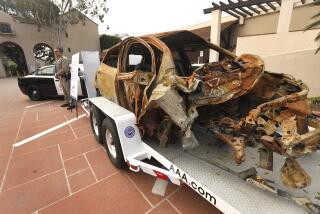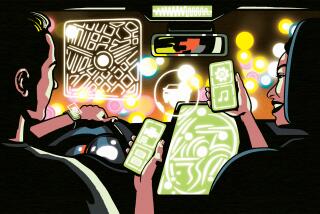Freeing Hands Won’t End Cell-Phone Woes
- Share via
Outlawing hand-held cell phones will not by itself reduce the high automobile accident rate of cell phone users.
Holding a cell phone while driving occupies the driver’s hands, which may prevent the driver from steering efficiently or flashing the turn signals. But holding a phone conversation occupies the driver’s attention, which may prevent the driver from noticing or reacting to signs, pedestrians, oncoming traffic, sirens or other elements in the driving environment.
Holding a phone conversation is not like holding a conversation with an in-car passenger. Conversations between a driver and a passenger are often discontinuous because the driver and the passenger share the travel experience and are therefore both aware of the tasks that the driver is facing at any given moment.
For example, if the driver is trying to work through bumper-to-bumper freeway traffic to an exit ramp, the driver usually interrupts the conversation to give his/her attention to the driving task. The passenger can see the task facing the driver and stops talking too. In fact, the passenger often assists the driver, such as by telling the driver when lanes are clear.
However, telephone conversations are quite different. Telephone etiquette requires the two people conversing on the phone to take turns talking; they are not allowed to pass when it’s their turn to talk.
Drivers using cell phones mistakenly adhere to this custom too. This means that a driver’s attention is often divided between negotiating a complex action such as a freeway lane change and taking his/her turn in the phone conversation.
The other party cannot see the need to discontinue the conversation and keeps on talking. The result is a distracted driver faced with the choice of breaking a social rule by not taking his turn to talk or breaking a driving rule by not paying attention to maneuvering the car.
Arline Burgmeier
Cypress






